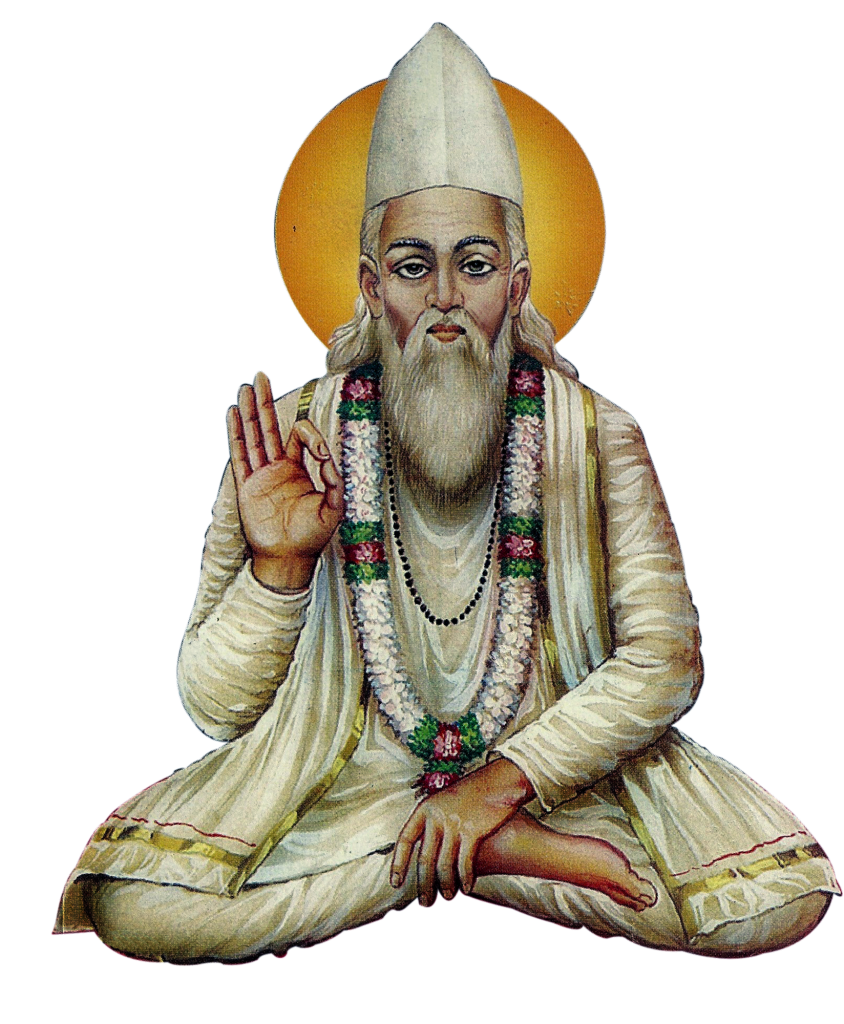Context:
Recently, President inaugurated the Sant Kabir Academy and Research Centre Swadesh Darshan Yojana and paid tribute to the Bhakti saint, Kabir at Maghar (Uttar Pradesh).
- According to legends, Kabir is said to have departed from the mortal world in Maghar.
Relevance:
GS I- Indian History
Dimensions of the Article:
- About Sant Kabir:
- The Bhakti movement
- Kabir’s critique of religion and caste
- Kabir’s legacy
About Sant Kabir:

- He was born in Varanasi and lived between the years 1398 and 1448, or till the year 1518 according to popular belief.
- He was from a community of ‘lower caste’ weavers of the Julaha caste, a group that had recently converted to Islam.
- He learned the art of weaving, likely studied meditative and devotional practices under the guidance of a Hindu guru and grew to become an eminent teacher and poet-singer.
- Kabir’s beliefs were deeply radical, and he was known for his intense and outspoken voice which he used to attack the dominant religions and entrenched caste systems of the time.
- He composed his verses orally and is generally assumed to be illiterate.
- He is also believed to be a disciple of the famous guru Ramananda, a 14th century Vaishnava poet-saint.
- Kabir knew that the saint would visit a certain ghat in Varanasi before the break of dawn.
- When Kabir saw him approaching, he lay down on the stairs which led to the river.
- Ramananda tripped over him and exclaimed his own mantra, ‘Ram, Ram!’.
- Kabir then claimed that the saint’s mantra had been transferred to him and therefore he must accept him as his disciple.
The Bhakti movement
- It began in the 7th century in South India, had begun to spread across north India in the 14th and the 15th centuries.
- The movement was characterized by popular poet-saints who sang devotional songs to God in vernacular languages, with many preaching for the abolishing the Varna system and some kind of Hindu-Muslim unity. They emphasized an intense emotional attachment with God.
- One school within the Bhakti movement was the Nirguni tradition and Sant Kabir was a prominent member of it.
- In this tradition, God was understood to be a universal and formless being.
- Many of the saints of the Bhakti movement came from the ranks of the lower to middle artisanal classes.
- Kabir was a ‘low caste’ weaver (Julaha), Raidas was a leather worker and Dadu a cotton carder.
- Their radical dissent against orthodoxy and rejection of caste made these poet-saints extremely popular among the masses and their ideology of egalitarianism spread across India.
- Kabir’s compositions can be classified into three literary forms – dohas (short two liners), ramanas (rhymed 4 liners), sung compositions of varying length, known as padas (verses) and sabdas (words).
Kabir’s critique of religion and caste
- Kabir is in modern times portrayed as a figure that synthesized Islam and Hinduism.
- In many of the popular bhajans associated with him today, his strong dissent towards religion is somewhat muted.
- While he did borrow elements from different traditions, he very forcefully proclaimed his independence from them.
- He did not only target the rituals and practices of both Hinduism and Islam, but also dismissed the sacred authority of their religious books, the Vedas and the Quran.
- Kabir did use the name Rama in his poems, but he clarified that he was not referring to the avatar of Vishnu, but a formless and general Hindu name for the divine.
- Instead of God being an external entity that resided in temples or mosques, Kabir argued that God existed inside everyone.
- Kabir’s revolt against the caste system also sought to do away with the complex rituals and ceremonies performed by the Brahmins.
- He, like the other prominent saints of his time, argued that it was only through bhakti, intense love or devotion to God could one attain salvation.
- In many of his verses, Kabir proclaimed that people of all castes have the right to salvation through the bhakti tradition.
- He sought to eradicate caste distinctions and attempted to create an egalitarian society, by stressing the notion that a Bhakt (devotee) was neither a Brahmin nor an ‘untouchable’ but just a Bhakt.
Kabir’s legacy
- Kabir’s own humble origins and his radical message of egalitarianism fostered a community of his followers called the Kabir Panth.
- A sect in northern and central India, many of their members are from the Dalit community.
- Historians estimate that it was established in India between 1600 and 1650, one or two centuries after his death.
- Today, the sect exists as a large and distinct community, with various sects under different spiritual leaders. However, all regard Kabir as their guru and treat the Bijak as their holy scripture.
- The Bijak contains works attributed to Kabir and is argued by historians to have been written in the 17th century.
- The main festival of most branches is Kabir Jayanti, the birthday of Kabir which is celebrated every summer with collective feasts at the maths.
- Several of Kabir’s verses and songs form a vital part of the Guru Granth Sahib. Compiled in 1604, the text is the oldest written collection of Kabir’s work.
- Kabir’s teachings continue to shape various religious discourses in India today.
- In the Sikh tradition he is seen to have influenced Guru Nanak, for Hindus he is a Vaishnavite (devotees of Vishnu), and is revered by Muslims as a Sufi saint.
-Source: Indian Express



